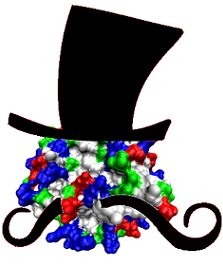Prions
Zombies at the Molecular Level
We've seen the cheesy zombie films. Mindless living dead creatures with the only goal to harass the living, often with the intent to dine on their brains. Where the newly and unfortunately lobotomized victims soon after also become zombies with the same insatiable platelet. Soon after everyone in town is transformed.
As incredulous as this sounds, a story along these lines is a plausible threat and a cause for much concern. Although the gravity of the situation is great, the scale at which these mutants operate is minuscule. I refer to the "mutated" proteins known to as prions.
Prions arise from endogenous proteins (referred to as PrPc) found in brain tissue, its native function has not been fully elucidated. The functional PrPc can undergo a conformational change (the exact mechanism is also not fully elcudiated) altering it to the infectious prion state (dubbed PrPSc). The conformational change is initiated by contact of PrPSc with PrPc. The basic reaction scheme is listed below.
If the conformation into the PrPSc form resulted in a minimal behavioral difference from PrPc, there probably would be little cause for concern. Unfortunately, this conformational change coincides with drastic functional changes, reinforcing a main staple of biochemistry that "form equals function".
Once formed, PrPSc begins to congregate extracellularly, forming amyloid plaques that will ultimately disrupt the normal function of the tissue. Amyloid plaque formulation results in transmissilbe spongiform encephalopathies (TSE), a lethal condition. The most notable disease caused by prions is "mad cow disease" due to past media attention. In humans, prions have been associated with Creutzfeldt-Jakob disease, Gerstmann-Straussler-Schninker syndrome, Fatal familial insomnia, sporadic fatal insomnia, Alpers syndrome and Kuru.



No comments:
Post a Comment